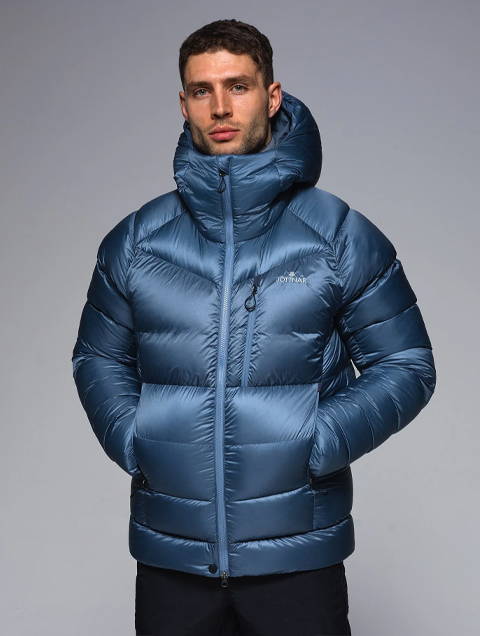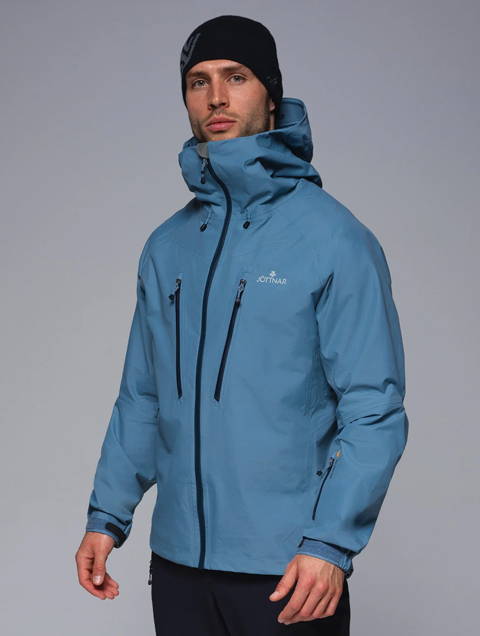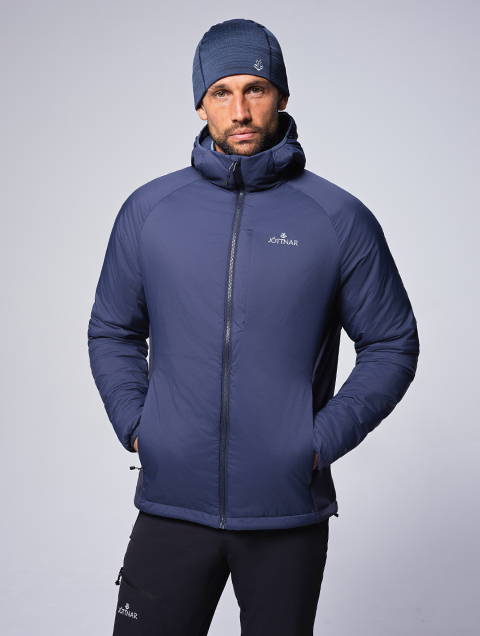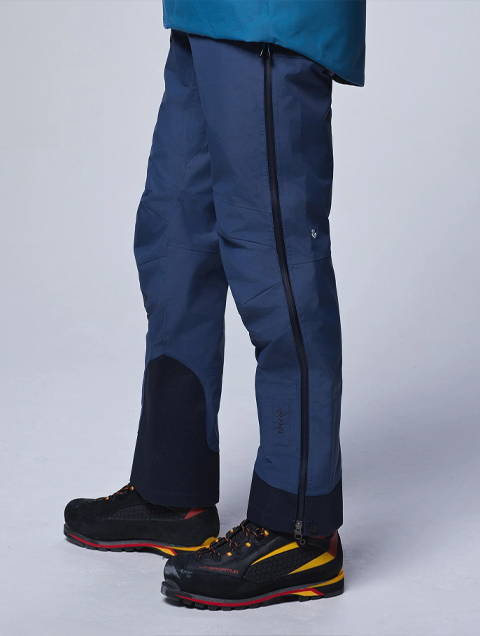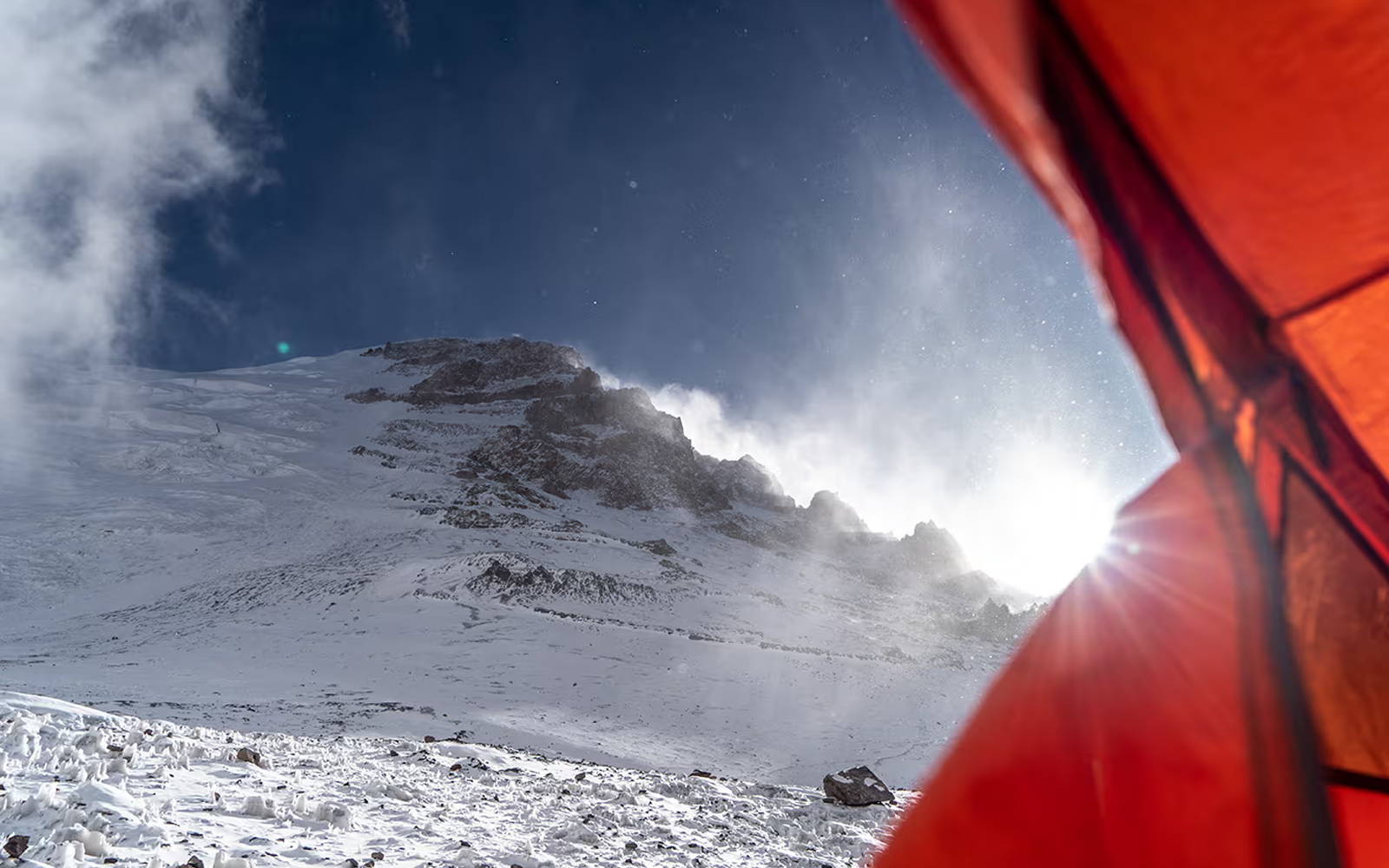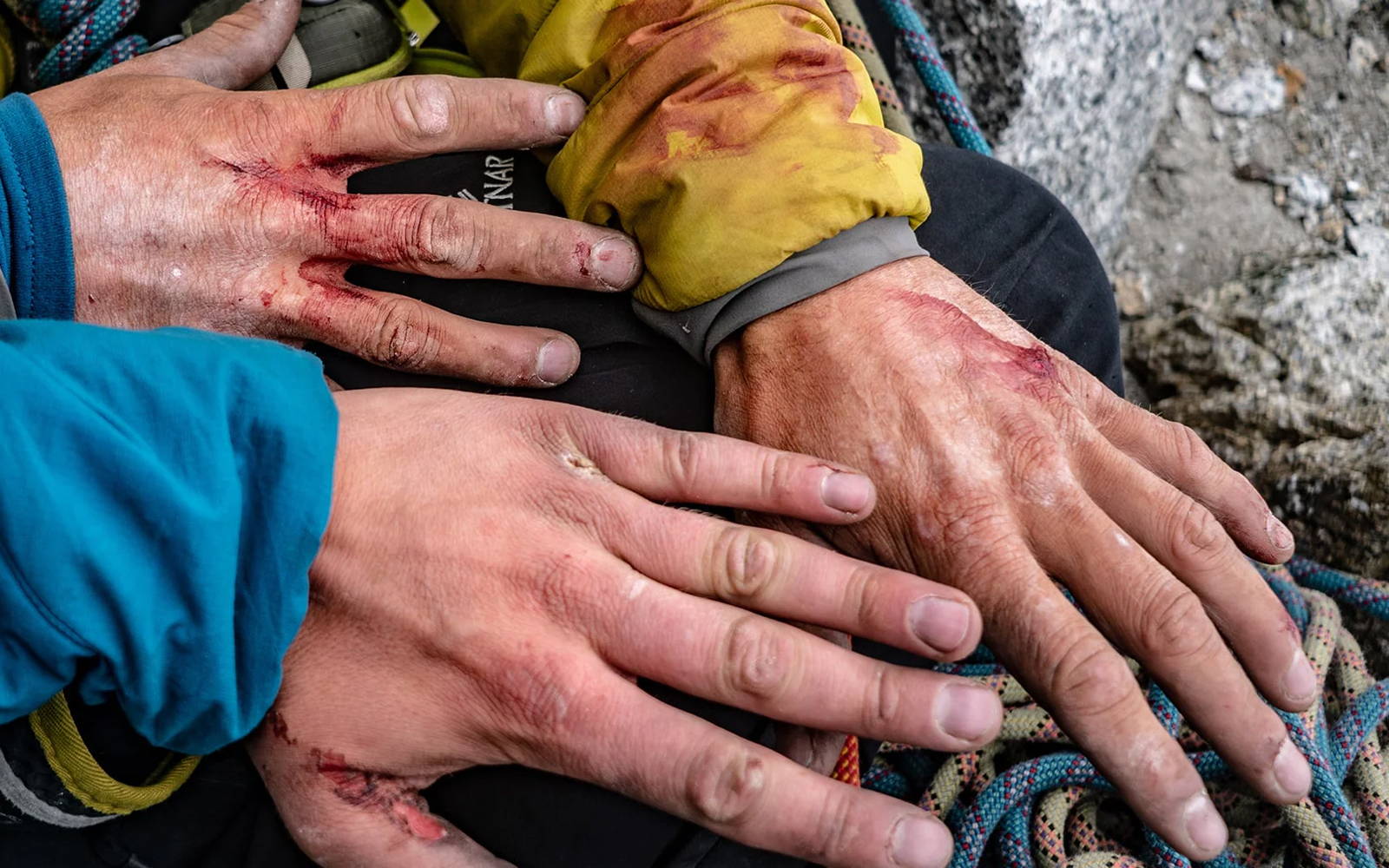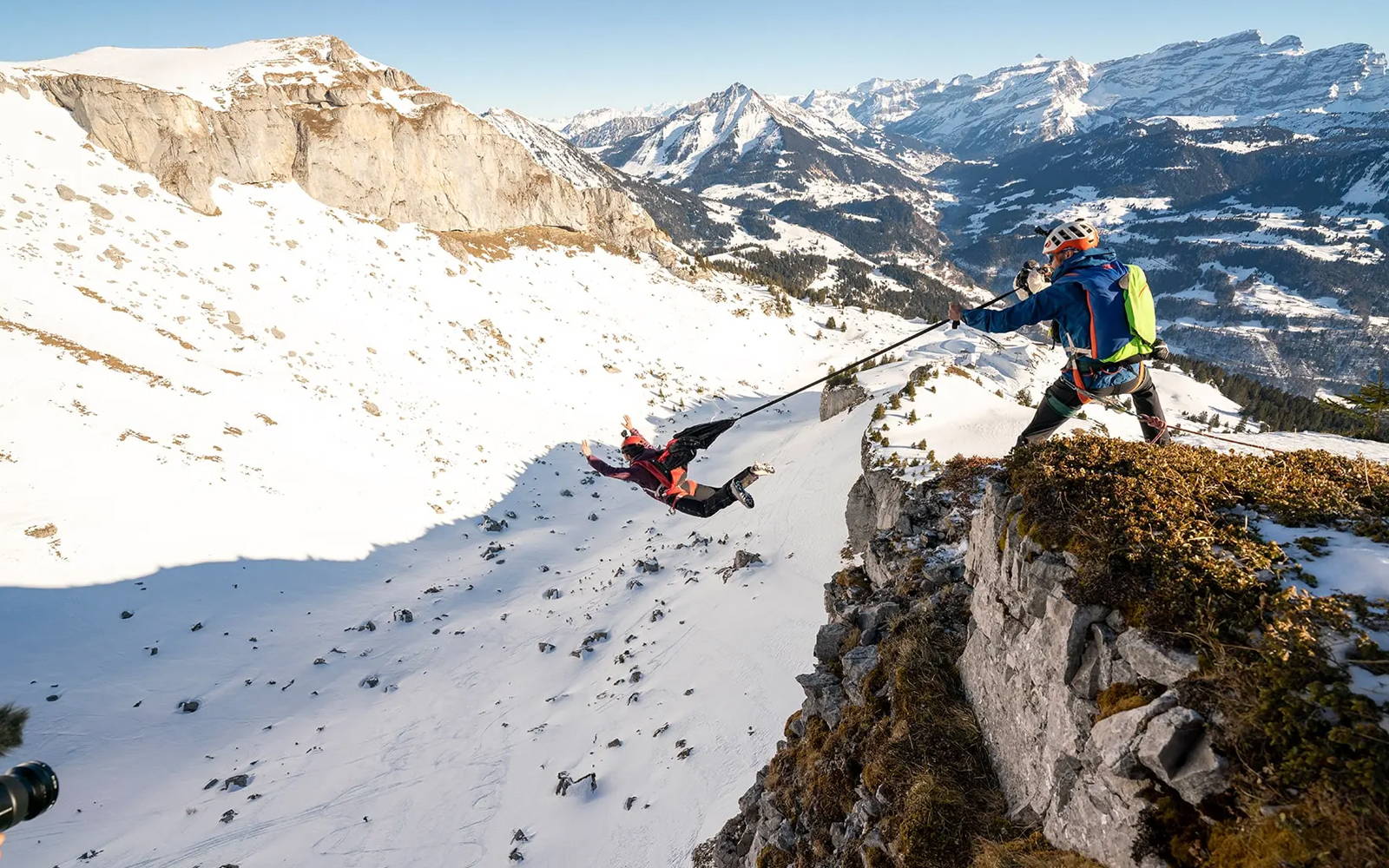
Adjacent to Mount Everest, Lhotse is the world’s fourth-highest mountain. In May of 2024, Tim Howell of the Jöttnar Pro Team aimed for a new world record: the highest ever wingsuit BASE jump, launched from Lhotse’s summit ridge at 8,100 metres.
If the goal is easy to achieve, is it worth setting in the first place? If you know the outcome is inevitable, is it still a challenge? Last year I was invited to dinner overlooking a frozen Finnish lake and asked, “What is your dream goal?” To me a dream is something that sits slightly out of reach. Something that will take the stars to align. It may take more than one shot, but it's worth trying again and again. What I learnt from my expedition to Lhotse this summer is that the jump of my life might not come as easily as I thought.
"I often write about risk and failure but the whole expedition was more than that"

"I often write about risk and failure but the whole expedition was more than that"

After six weeks in the Khumbu valley and an unsuccessful attempt to open up the world’s highest wingsuit BASE jump, I was on a helicopter heading back to Kathmandu. I had never fought so hard for a goal in my life. It would be the jump of all jumps and unlikely ever to be beaten due to the topographical variables needed to perform a wingsuit flight. I often write about risk and failure but the whole expedition was more than that: it was about dreaming as big as I can, and learning the ways of high altitude mountaineering and everything that comes with it, including the commercialisation, ethics and the drive to spend so much time and effort on a single objective.
My altitude jumping record stood at 6,000 metres and although I had no problems acclimatising, I definitely felt the thin air while carrying all our supplies to Camp 2 on Aconcagua. I would be using oxygen on Lhotse. The focus for me was the jump, not the climb, and I wanted everything to be in place to give me the best chances of success. This meant a strong climbing sherpa team, a lead guide with plenty of high altitude experience and bottled oxygen. I also thought that if I was to pull the jump off, it would leave future pilots the chance to improve on it through purer ethics and methods.



My wife and I flew into Lukla and ascended from town to town acclimatizing as we went. Namche, Chuckung, Dingboche, base camp of Island Peak. The paths are well trodden, with mostly hikers on their way to Everest Base Camp. We counted the plastic ponchos, Nalgene bottles hanging from Christmas cracker carabiners and a trail reminiscent of a Snowdon ascent on a busy bank holiday. Maybe my perspective is elitist or stubborn, but my progression in the mountains has come from years of building up skills and experience. It’s been the same with wingsuiting. One project leading to the next - bigger and more complicated. Only now do I feel like I’m ready to play in the big mountains. I feel lots of people are trying to skip steps, that those with finances in excess of their skillset can acquire supreme confidence in the ability of the people around them, rather than in themselves. I always want to be able to rely on myself, first, in the mountains rather than the people around me.


"You'll never feel the joy of movement if you're struggling. You've got to get good enough and strong enough to reach the point where you can feel this quintessential lightness."
John Gill

On a ridgeline on Makalu 15 kilometres away was a friend, also trying to find a high altitude exit. He was skilled in the mountains and in a wingsuit, but I felt concern that his three years of wingsuiting experience hadn’t given him the experience needed to make the right decisions. As it turned out, the weather was unforgiving also on Makalu and he ended up not jumping. But later, sadly, he impacted on a mountainside in India on another jump.
I didn’t know what to expect from the Khumbu Icefall apart from all the clichés that come with it: a glacial maze of crevasses and seracs, blocks of ice as big as cars stacked up like Jenga pieces. I didn’t witness any near misses or particularly dangerous blocks of ice falling, but it was an interesting section. Ice equivalents of all types of rock formations you find while climbing: conglomerates, chock stones, overhangs, pillars and threads. It would be an interesting place to sit awhile and observe, if it wasn’t for the dangers of sitting still for too long amongst ever-moving glacial terrain.
"One project leading to the next - bigger and more complicated. Only now do I feel like I’m ready to play in the big mountains."

"One project leading to the next - bigger and more complicated. Only now do I feel like I’m ready to play in the big mountains."



As we gained altitude I felt an air of anxiety about how secluded and cut off we were. No helicopter is coming for rescue, people barely have enough energy to help themselves, let alone others. The tents are cut into ledges on a 45-degree slope that rolls all the way down to Camp 2, 2,000 metres below. A queue at the rock band held me up, slowly depleting my reserves. I ran out of oxygen 200 metres away from Camp 4. I was annoyed that I felt reliant on supplementary oxygen. One man who had greeted us in the queue never made it out of his tent the following morning, despite resuscitation attempts. It was the reality of life at high altitude.
"A world of difference lay on the other side. A nightmare world of swollen, swirling clouds and spindrift..."
Tim Howell at 8,193 metres on Lhotse with his team of Sherpas.
The queues normally go at a steady pace, but the cruxes slow things down and people have to wait. I would see people exhausted, taking a rest, and such was the environment that I would automatically presume that that was them; that they would perish on that spot hours later not being able to move due to exhaustion. But of course I was the same, carrying my bag of supplies. I too was exhausted and needed a rest, and I was mindful to step out of the way of the flow of traffic. “It takes no effort for please and thank you,” might be a common phrase between mother and child but at 7,500 metres it does take effort and I took no offence from people not responding to my greetings or help.



At 3am we left the tent at Camp 4, untethered from the mountain, forging a new route traversing to the gully that would lead to the planned exit point on the ridge. In the Alps I wouldn't have thought twice about a solo traverse, but I looked down to the glacier plateau 2,000 metres below and wondered where I would stop if I slipped or caught a crampon in my exhausted oxygen-deprived state. Shidi led the way, fixing the ropes, hammering a piton into rotten cracks every 20 metres or more. My oxygen tank was flowing heavily, feeding my body and mind ready for the jump that lay only a hundred or so metres above. The sky was blue, with barely any wind. It seemed as though everything was lining up. Waiting at a belay stance, I visualised the exit again and again, and specifically the elation once I landed in the sandy cricket pitch beside Island Peak base camp. All the sweat and effort would be worth it for that four minute flight. The whole trip had been a rollercoaster polarised by foresight that it would all work out, followed then by doubt. But as I neared the ridge and my proposed launch point, now only 100 metres away, the doubt was replaced with a certainty that nothing could stand in the way. The objective was as good as done; I was going to get the jump.



Until I straddled the knife-edge ridge, that is.
A world of difference lay on the other side. A nightmare world of swollen, swirling clouds and spindrift – a complete contrast to the sunny stillness from which I’d just emerged. It was un-jumpable, of that there was no question. So with oxygen dwindling and unable to afford any kind of waiting game, near broken by exhaustion and emotional turmoil, we made the only viable decision: it was time to turn around and head home.
Although disappointing, at no point did I feel out of my depth. I’ll continue to pursue this project until it’s accomplished. It’s a lifelong goal and not a flight of fancy, so I'll prepare for the next attempt with all the lessons I learnt from the first one. Maybe that additional 1% will make the difference next year. And so back to where I began: uncertain, non-inevitable and slightly out of reach. My kind of challenge.

Tim Howell is a member of the Jöttnar Pro Team. Find out more here.

